astronauts
Latest
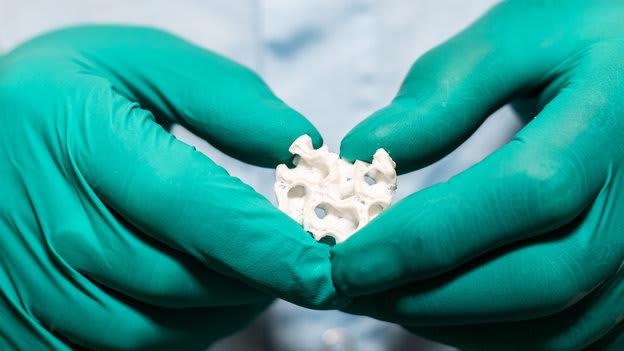
Mars crew could 3D-print skin and bones for injuries
A journey to Mars will take several months, and humans won't be able to turn back if an astronaut suffers a burn or a bone fracture. Which is why scientists at the University Hospital of Dresden Technical University have now produced the first bioprinted skin and bone samples for use in space. Even though treating patients with 3D-printed skin or bones is still in its early stages back on Earth, the technique is particularly vital in space, where the human body doesn't heal as quickly.
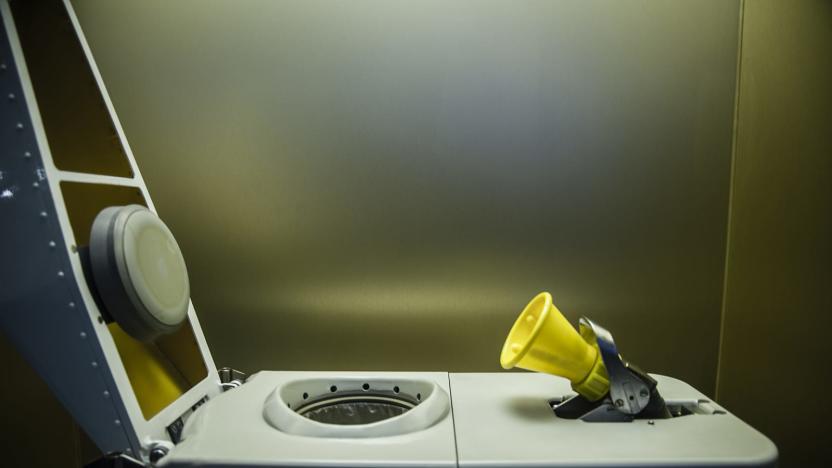
ISS toilet leak dumps two gallons of 'water' on crew
If you think a burst toilet is bad news on Earth, spare a thought for the astronauts who have to deal with it in zero gravity. That's what the poor American souls on the ISS were left grappling with last week when their $19 million commode leaked, according to a NASA status report. Around 9.5 litres of water spilled out as a result of the, um, accident. The crew had to clean it up using towels while working to fix the leak, claimed the space agency.

NASA announces astronauts for first Commercial Crew missions
Today, NASA announced the astronaut selection for the first Commercial Crew flights, which will finally restore the ability to launch astronauts from American soil. Boeing's first test flight, which is scheduled for mid-2019, will have Eric Boe, social media-savvy astronaut Chris Ferguson and rookie Nicole Aunapu Mann on board. SpaceX's inaugural Crew Dragon voyage, called Demo-2 and targeting April 2019, will have Bob Behnken and Doug Hurley on board.
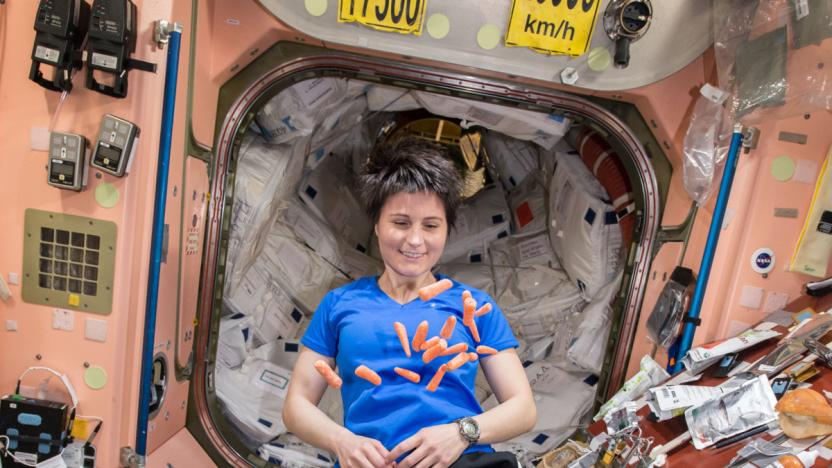
Scientists explore using astronaut poop to make space food
Astronauts aboard the ISS drink recycled pee for a reason: we can only bring so much food and water to to space. Imagine how much more we need to take for that year-long journey to Mars. Since bringing more resources means higher costs -- the heavier a spacecraft is, the more fuel it needs, after all -- scientists are looking to find ways to make self-sustaining vehicles. A team of researchers from Penn State University, for instance, have developed a method to make space food with astronaut poop.
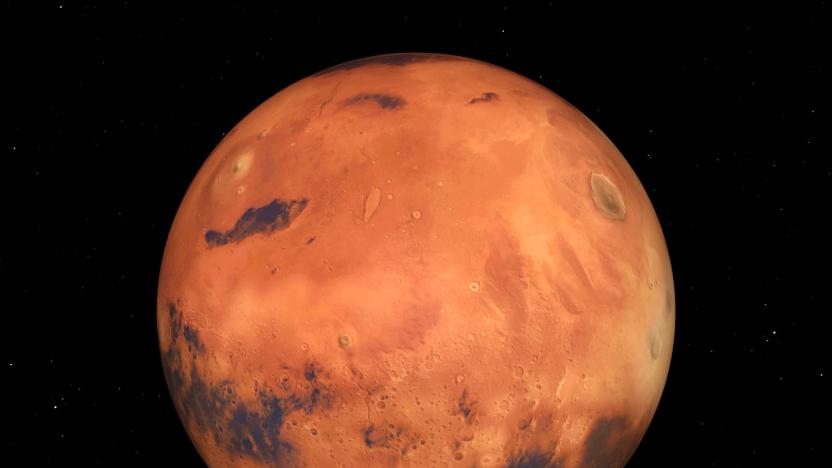
Living in space has drastic, negative effects on the brain
Ever since we started seriously thinking about sending humans into space, the question that has immediately followed is, "What will zero-g do to our bodies?" After all, our frames and body functions have evolved to exist within Earth's gravity, not in the weightlessness of space. And now, thanks to astronauts such as Scott Kelly and Peggy Whitson, we know that long-duration spaceflight takes an incredible toll on the body. But what causes these issues and changes? That's what one study conducted by neuroradiologist Donna Roberts aimed to find out.

NASA study finds first SLS launch should be unmanned for safety
It's an exciting time for spaceflight, for sure. Both NASA and SpaceX have plans in place to send rockets and humans into our solar system. Elon Musk's company wants to use the moon as a pit stop on its way to Mars, and NASA wanted to include a human crew on its now-delayed launch to test a new rocket and companion capsule. Today, however, a study by NASA has concluded that sending astronauts on the first flight is not feasible as the costs of keeping them safe are just too high.
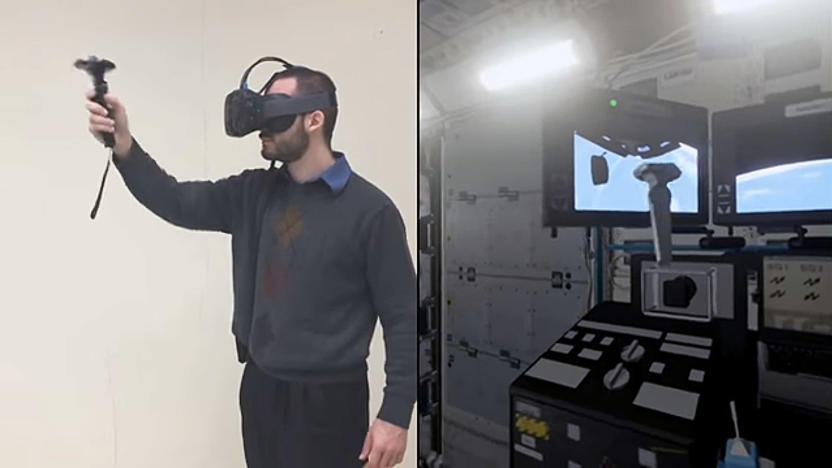
NASA trains astronauts with zero-G virtual reality
To train ISS astronauts, NASA uses physical mockups, zero-G "vomit comet" airplane rides, neutral buoyancy (underwater) and other pricey and complex schemes. However, virtual reality has become a new option, allowing astronauts to do realistic training for things like maintenance in an accurate, simulated zero-G environment. The company that helped them build the sim, Epic Games' Unreal Engine, recently unveiled a video showing exactly how that works.

Spaceflight changes the shape of the human brain
The human brain reshapes itself during spaceflight, according to a study by a team of scientists from the University of Michigan. They came to that conclusion after comparing the structural MRIs of 12 astronauts who only spent a couple of weeks as ISS crew members against 14 who spent six months aboard the space station. Apparently, they saw both an increase and a decrease in gray matter in different parts of the brain, and those changes are more pronounced in the subjects who spent the most time in orbit. In short the more time you spend in space, the more gray matter gets displaced.
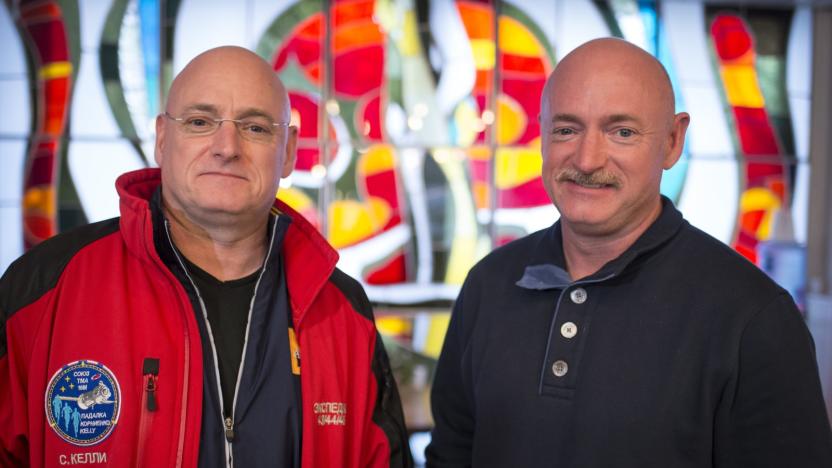
NASA studies astronaut twins to observe the rigors of space
When you spend nearly a year straight in space, you can expect NASA will want to conduct a good bit of research on you when you return to Earth. The space agency has been doing just that with astronaut Scott Kelly who was in orbit for 340 days. There's no one better to compare Kelly to than his twin brother and fellow astronaut Mark. NASA collected blood and other biological samples to look for any changes a long spaceflight may cause in the human body.

ICYMI: Lasers of the future will create an atmospheric lens
try{document.getElementById("aol-cms-player-1").style.display="none";}catch(e){}Today on In Case You Missed It: A new company called BAE Systems is touting its Laser Developed Atmospheric Lens tech, which aims to use particles in the atmosphere to make a big magnifying glass. They admit we are many years from actual application of the idea, but that doesn't make the video any less cool. Meanwhile NASA is booking rides on Russia's space transport vehicle, the Soyuz, through 2019, since SpaceX and Boeing are both behind on their plans for a vehicle to get American astronauts to the International Space Agency. The America's Funniest Home Videos compilation is here. As always, please share any interesting tech or science videos you find by using the #ICYMI hashtag on Twitter for @mskerryd.
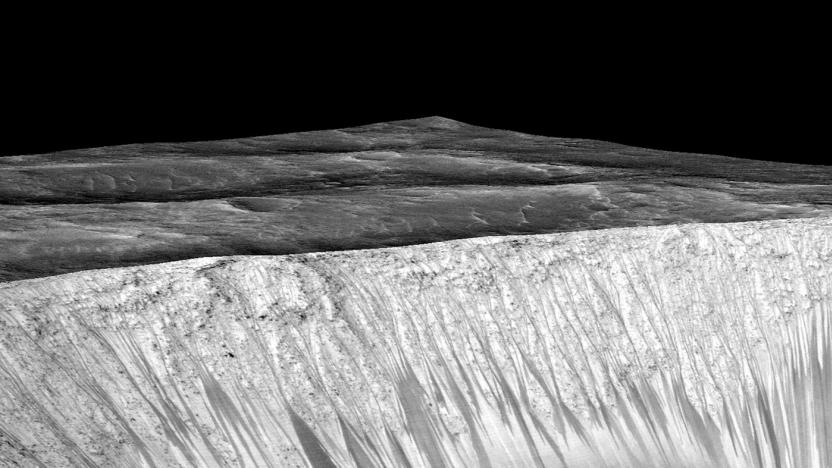
We might not be able to use Martian water after all
Remember those dark streaks NASA's Mars Reconnaissance Orbiter spotted running down canyons and hillsides on the red planet? They indicated the presence of water, which was a cause for celebration, as having water on Mars means astronauts won't have to carry as much when they visit. Unfortunately, a new study says the planet's water might not be drinkable. Worse, it might not even exist. A team of scientists from the University of Arizona looked more closely into those dark streaks called "recurrent slope linae" or RSL in an effort to figure out their origin.

NASA gets inundated with astronaut applications
Apparently, everyone wants to be an astronaut. NASA has received a record number of applications for its open astronaut positions from mid-December 2015 until February 18th. Over 18,300 hopefuls submitted their resumes, almost thrice as many compared to the agency's last hiring round in 2012. This round has shattered the previous record set way back in 1978, wherein 8,000 people tried to get a spot in the agency's roster of space explorers.

Virgin Galactic taps fashion brand Y-3 for space suit designs
If you set out to do something incredible, you should do it looking your best. For Virgin Galactic, the commercial spaceflight venture from Richard Branson, that means teaming up with fashion brand Y-3 to create apparel for its future pilots, astronauts and on-the-ground team operations members. In case you're not familiar, Y-3 is a collaboration between Adidas and Yohji Yamamoto, a decorated and well-respected Japanese designer.

ICYMI: The best space, drone and car tech of the year
#fivemin-widget-blogsmith-image-377507{display:none;} .cke_show_borders #fivemin-widget-blogsmith-image-377507, #postcontentcontainer #fivemin-widget-blogsmith-image-377507{width:570px;display:block;}try{document.getElementById("fivemin-widget-blogsmith-image-377507").style.display="none";}catch(e){}Today on In Case You Missed It: We are rounding up our very favorite transportation stories since launching ICYMI in June and it wouldn't be us if we didn't talk about NASA taking applications for astronauts again. Couple that with NASA's Pluto fly-by this year and it's clear that the space agency is on the upswing.

Here's what the astronauts aboard the ISS have been up to
The first piece of the International Space Station (ISS) was launched into orbit in 1998 and two years later, its first occupants arrived. It's currently the largest artificial body orbiting the planet and much of it's devoted to testing aspects of living in space. When astronauts aren't busy exercising, eating or working on David Bowie covers, they're knee-deep in an endless array of experiments and observations. We've gathered a sampling of those projects to see just what they've been working on over the years in their orbital laboratory.

Astronauts capture stunning 4K video of antacid bubbles aboard the ISS
NASA released 4K video of astronauts aboard the International Space Station experimenting with water, antacid and food coloring to create incredible, fizzing aqueous spheres in the zero-G environment. The ISS crew captured the footage with a Red Epic Dragon camera, which NASA is evaluating for use in monitoring scientific experiments, celestial phenomena and and vehicle operations. According to the space agency, this is among the first such footage of its kind. We can only hope it won't be the last.

NASA needs help designing a smartwatch app for ISS astronauts
NASA has launched a contest to design a smartwatch app interface for use by International Space Station (ISS) astronauts. Nobody will be entering it for the $1,500 prize money, but you'll certainly get some pride and fame out of it. The app will be no less than "the general user interface for smart watch applications" aboard the ISS, according to NASA. As such, it'll need a lot of different functions: A "Crew Timeline" app for astronauts' agendas; a "Cautions and Warnings" app; another to check the communications status with Earth; and a timer "for procedures or until next activity."

NASA is putting Microsoft's HoloLens to work in space
When its mixed reality headset was first announced, Microsoft touted its ability to lend a hand in a variety of enterprise scenarios. The company teamed up with NASA for Sidekick: a project that is putting HoloLens on the International Space Station to give virtual aid to astronauts. The project uses the tech in two ways to offer support a crew member wouldn't ordinarily have while completing a task. First, Remote Expert Mode uses Skype to give someone on the ground a view of exactly what the astronaut is seeing. From there, a colleague can remotely guide the task or scribble notes and drawings in the astronaut's view -- all in real time. A Procedure Mode overlays animated holographic illustrations on top of real objects for reference. Not only could this cut down on training time, but it could provide a valuable guide in situations plagued by communication delays.

Incredible GoPro footage shows what it's like to spacewalk
Leaving the cozy confines of Earth's atmosphere for life aboard the ISS is an exceedingly rare experience reserved for just a handful of astronauts. But thanks to NASA and GoPro, now you can share in the breathtaking views/sheer terror that astronaut Terry Virts enjoyed during a recent hour-long spacewalk. In the video below, Virts attaches the action camera to his space suit prior to beginning an EVA (or "Extravehicular Activity" as spacewalks are officially called). Viewers are treated to an unprecedented view of the ISS's underbelly as Virts adapts its docking station for use with a new generation of commercial spacecraft rather than the retired space shuttle.

Mars One expedition whittles down its applicant pool to just over 1,000
Apparently, over 200,000 people applied for Mars One's mission to permanently leave Earth -- and while there's room to spare on the Martian plains, moving that many humans off-planet simply isn't feasible. The outfit culled that initial pool to 1,058 candidates, and emailed them to say that they'd made it past the first round of (many) cuts for the one-way mission. These remaining astronaut-hopefuls will undergo a battery of team-based training and simulations on Earth to separate the weak links, shrinking the ranks even further. When exactly those trials are going to take place hasn't been determined yet: Mars One says it needs to sort out its broadcast TV-rights first. After all, inter-planetary travel isn't cheap.











